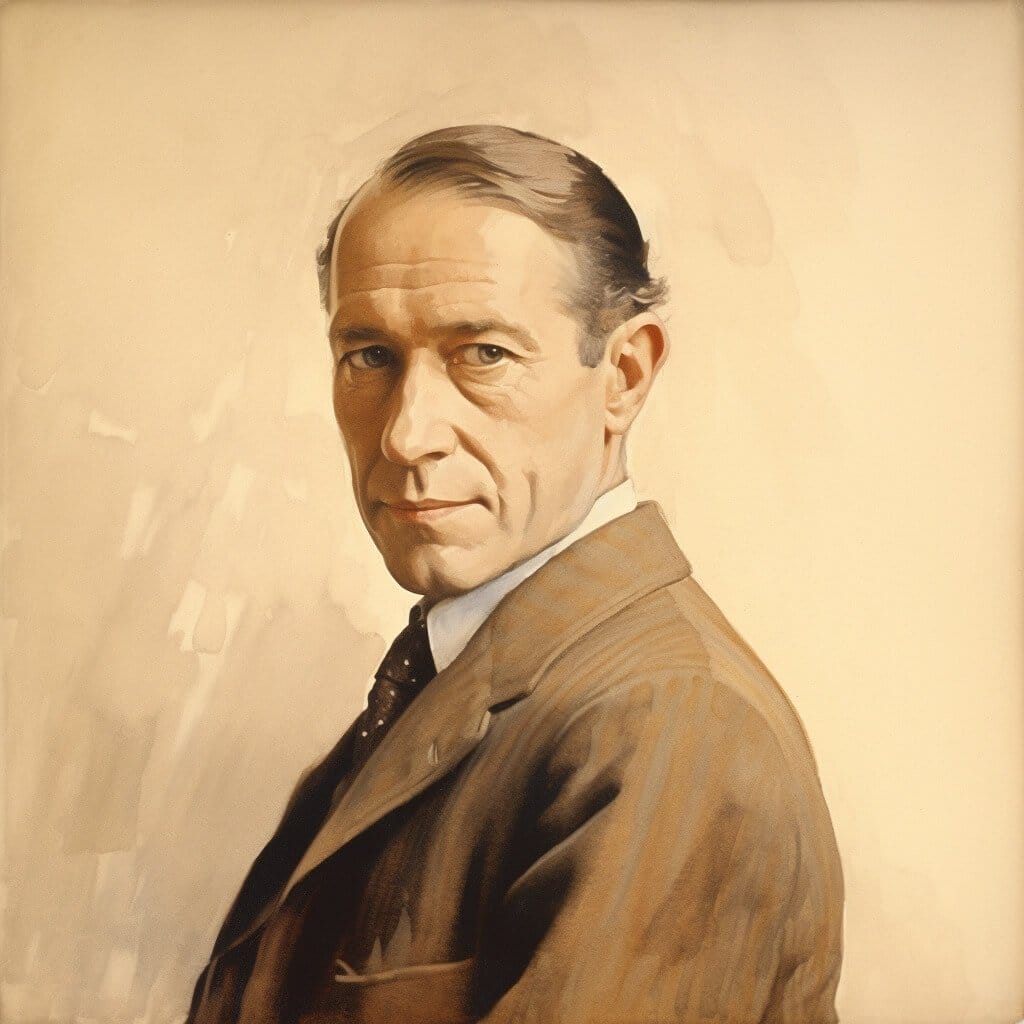E.E. Cummings wrote close to 3,000 poems over his lifetime and is often considered to be one of the most important and game-changing writers of the 20th century. One of a number of pioneering American poets, Cummings did not stick to linguistic rules and traditional poetic form, pushing the envelope with his distinct personal style. Cummings’ poetry is instantly recognizable due to his unusual usage of punctuation and capitalization. In fact, his name is more often written as ‘e.e. cummings.’
Critic Randall Jarrell once made the claim that “No one else has ever made avant-garde, experimental poems so attractive to the general and the special reader.”
Life Facts
- E.E. Cummings was born in Cambridge, Massachusetts, in October of 1894.
- Cummings first poems were published in “Eight Harvard Poets” in 1917.
- He worked as a book dealer after graduation.
- He married twice and then spent the last years of his life in a relationship with Marion Morehouse, a fashion model.
- ‘XLI Poems‘ and ‘Tulips and Chimneys‘ solidified his reputation.
Interesting Facts
- E.E. Cummings won a Guggenheim Fellowship in 1933 and again in 1951.
- Cummings was the recipient of the Charles Eliot Norton Professorship at Harvard.
- He was arrested by the French military for expressing anti-war views during WWI in which he was enlisted.
- His father died in a terrible car accident that also injured his mother in 1926.
- He often got in trouble with the literary world for writing erotic or controversial poems.
Famous Poems
- ‘in Just-‘ is one of Cumming’s best-loved poems. In it, he speaks on the beginnings of spring, a concerning balloonman/satyr, and the children he calls to his side. The strange and even baffling images in this poem come together to form an even stranger narrative. The poem contains many of the elements that he is remembered for today. These include capitalization, unusual spacing, and syntax.
- ‘I carry your heart with me’ is one of the most popular love poems of all time. In it, the speaker describes the influence of his love on everything he does. He speaks about the feelings of oneness he experiences with them and
- ‘somewhere i have never travelled, gladly beyond’ describes the feelings a speaker has for his intended listener. He does whatever the person asks of him. He travels through their eyes and they “enclose” him in a very special way. Their fragile being is contrasted in the final stanzas with the powerful control they have over him.
- ‘what if a much of a which of a wind’ makes use of dark and dangerous themes. These include the apocalypse and more varied types of destruction. He moves through different ways that the earth could be destroyed between the stanzas. The wind might tear it to pieces or “a doom of a dream” could “bite… this universe in two”.
- ‘pity this busy monster, manunkind’ speaks on the nature of progress and how it hasn’t always been good for the human race. It is the “comfortable disease” that humankind has grown used to. The speaker is particularly worried about humanity’s changing opinion of nature and the impact of science.
Explore more E.E. Cummings poems.
Early Life
E.E. Cummings was born in Cambridge, Massachusetts, in October of 1894. He was born Edward Estlin Cummings to parents Edward Cummings and Rebecca Haswell Clarke. His father was a professor at Harvard University and then later a minister at South Congregational Church in Boston, while his mother stayed at home with the children. Cummings and his sister had a very close relationship with their mother, as they spent almost all of their time with her as children.
As a child, he spent a great deal of time outdoors and at Silver Lake in New Hampshire. Cummings was quite young when he first began composing poetry and would write every day from eight to twenty-two. He spent time experimenting with different forms and attended Cambridge Latin High School. It was here that he first began to study Latin and Greek seriously. He would go on to receive his Bachelor’s in Arts and Masters in Arts from Harvard University.
Cummings first poems were published in Eight Harvard Poets in 1917. His work is noted for its experimental style and distinct word choices. He would later make use of a number of different originally coined compound words within his verse. After graduating from University, he worked as a book dealer.
In the early years of the First World War, Cummings enlisted in the Norton-Harjes Ambulance Corps. He was able to spend some time in Paris and quickly learned to love the city. Cummings and a close friend he made while in France wrote a number of letters during the war, which drew the attention of the censors. He expressed anti-war views and was eventually arrested by the French authorities as they suspected him of spying.
Cummings was released two months after his arrest when his father wrote to President Woodrow Wilson. These experiences formed the basis of his first book, and novel, The Enormous Room, which was published in 1922. In 1918, Cummings returned to the United States but was soon drafted into the army.
Early Literary Career and Relationships
It was also during this time period that Cummings met and began an affair with Elaine Orr, who was married at the time. The two were married in 1924 and had a daughter together. The relationship did not last long, ending in divorce approximately two months later.
After the war, the poet made a home in Paris and then New York. It was there that he published, Tulips and Chimneys, in which his original use of language was present. This collection was followed by XLI Poems in 1925. These two works solidified his reputation as a poet of the avant-garde. The later years of the decade saw Cummings return to Europe a number of times. He even went to the Soviet Union, a trip that inspired Eimi. The poet also spent time working for Vanity Fair magazine as an essayist and portrait artist.
Tragedy struck in 1926 with the death of his father in a disastrous car crash which also severely injured his mother. This incident and the loss which resulted from it had a deep impact on the poet. In 1929 Cummings married for the second time, this time to Anne Minnerly Barton. The two were only together for three years, though, separating in 1932.
Although Cummings would not officially marry again, he spent most of the rest of his life with Marion Morehouse, a fashion model. The two were in a common-law marriage until Cumming’s death in 1962.
Writing Career
Throughout his life, Cummings entered the spotlight for a variety of reasons. He wrote a number of erotic poems in the early 1920s and then again stepped into dangerous literary territory in the 50s. The work, Xaipe: Seventy-One Poems, was the source of a great deal of outrage. He also published four plays, one of which, HIM, was performed by the Provincetown Players in New York City. He also wrote the dramatic works Tom, A Ballet, and Santa Clause: A Morality, as well as Anthropos, or the Future of Art.
There were times during Cummings’ career when he had to resort to self-publishing, as a number of publishers spurned the chance to release his work due to political leanings. Fortunately, Cummings’ poems still managed to reach far and wide despite this lack of backing.
The poet was also the recipient of a number of different awards throughout his life. These included a Guggenheim Fellowship in 1933 and 1951, the Shelley Memorial Award for Poetry in 1945, and the Bollingen Prize. Cummings was also the recipient of the Charles Eliot Norton Professorship at Harvard as well as a fellowship with the American Academy of Poets. As part of his new-found association with Harvard, he gave the Charles Eliot Norton lectures, which were published as nonlectures, being highly autobiographical in nature.
Death
Cummings died on September 3, 1962, at the age of sixty-seven. The last decade of his life was filled with travel and speaking arrangements. He died of a stroke at Memorial Hospital in North Conway, New Hampshire. The pet was buried at Forest Hills Cemetery in Boston.
Influence from other Poets
E.E. Cummings was notably influenced by writers such as Ezra Pound, Amy Lowell, Robert Frost, and Gertrude Stein.
Behind the poems of Robert Frost, Cummings’ work has been considered the second greatest of any American poet.
FAQs
E.E. Cummings was a 20th-century American writer who was a pioneer of modern American poetry, bending the rules for his own purposes. He would not use conventional punctuation or syntax, which helped create his weird but wonderful poetic style.
E.E. Cummings was a prolific poet, writing over 3000 pieces of work during his career. However, there are some that stand out as his best. These include; ‘I carry your heart with me,’ ‘in Just-,’ ‘Buffalo Bill’s,’ ‘anyone lived in a pretty how town,’ and ‘somewhere i have never travelled, gladly beyond.’
Along with his unique and unconventional style, there was some controversy surrounding E.E. Cummings during his career. The subject matter of his works sometimes pushed the boundaries of what was acceptable at the time, as he wrote a number of erotic poems. Some consider his work to contain some questionable words, such as racial slurs. However, others argue that across his whole body of work, it is clear that he was anti-racist.
E.E. Cummings was most certainly a modernist in the field of poetry. He was renowned for his experimental attitude toward the written word, playing around with punctuation, language, and poetic structure. Essentially, his whole style had the aim of making something ‘new’, which in itself is inherently modern.
On 3 September 1962, E.E. Cummings suffered a fatal stroke at his home, Joy Farm, in Silverlake, New Hampshire. He fell unconscious immediately and never recovered, passing away the next morning.



